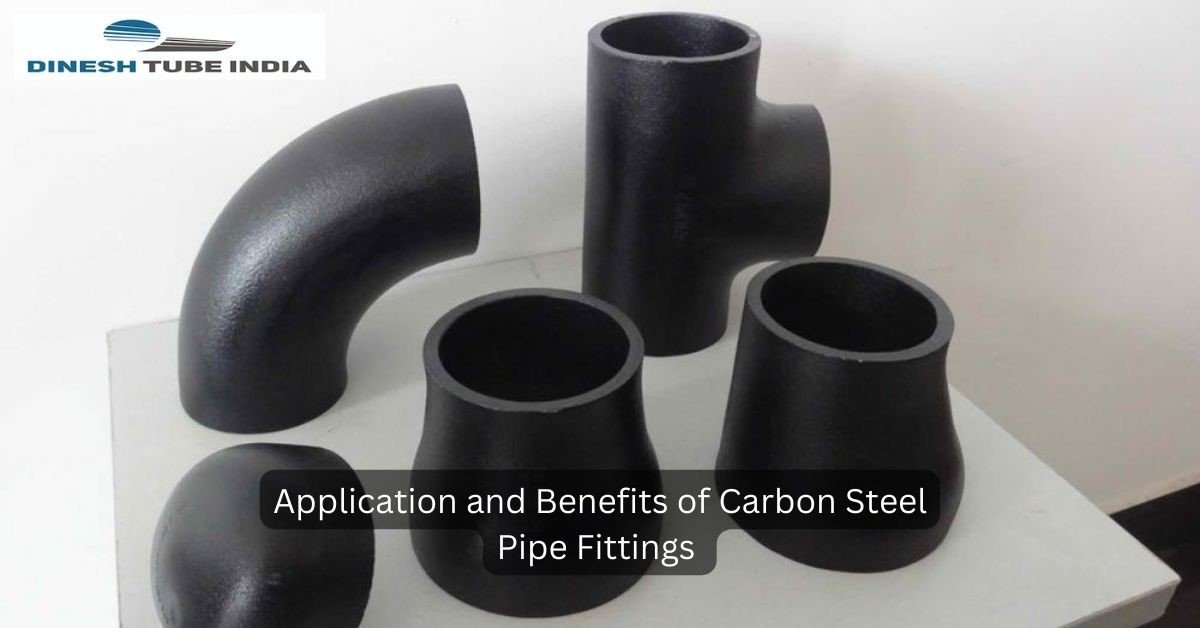Carbon steel is produced when, along with steel, carbon is the alloy component. It makes it stronger and tougher by the addition of carbon to steel. Steel that has more than 2 percent carbon content is called cast iron.
Carbon steel and ASTM A234 Pipe Fittings. constructed from a range of manufactured products and houses. Let us take a look at some of its benefits and why it will be ideal for an upcoming project to use steel piping.
- Cost-Effective
You save money because there is no need for replacements. Some tubes depreciate more rapidly than carbon steel. Also, bear in mind that the pipes can be much narrower than other pipes with the strength of carbon steel, meaning that pipes of the same diameter would have a greater carrying capacity. These pipes can also be easily bent and formed to match the requirements you need. Joints, valves and other fittings made of carbon steel are widely used.
- Durable
It has already been listed in the above paragraph, but carbon steel’s durability requires a category of its own. For a number of purposes, steel carbon is perfect for framing a construction or structure. Non-combustible, first. Second, because of its power, it’s more immune to natural disasters. And third, it’s really resistant to shock. These pipes are also used in water mains that are laid under high roads due to their shock resistance and longevity.
- Recyclable
Steel can be recycled, regardless of whether it is carbon steel or stainless steel, and much of it typically is. In fact, more than paper, plastic and glass combined, steel is recycled, with 70 percent of all steel used being recycled.
It is also considered that carbon steel is a cheaper alternative to stainless steel. But in some cases, with its benefits and advantages, this material deserves to be the first choice in the selection of piping systems rather than a second-rate alternative.
This article doesn’t plan to pit stainless steel against carbon steel, just to clarify. Instead, it highlights the strengths and disadvantages of each piping material; how it is suitable for one application and impractical for another.
Its lower cost is possibly the single biggest factor in choosing Carbon Steel rather than one of the Stainless Steel grades. Not every application needs to use stainless steel, so why not maximize the benefits of carbon steel press fitting?
Carbon Steel is the Commodity of Choice for the Construction of Oil and Diesel Fuel Pipework in an Economical and Quick Way
- No open flames
- No permits for hot jobs
- No laborious pipe threading
- Not an observer who may be needed for welding operations
Carbon Steel press fit pipework is used widely in Europe for closed circuit heating systems and compressed air. In a closed circuit heating system air or oxygen – the principal source of oxidation corrosion – is eliminated.
For piping systems, let’s delve into the strengths of carbon steel alloy and what its strengths mean.
Carbon steel gives any substance found in it a high tensile strength. Without losing any of its power, it can be bent and extended into any shape.
With this attribute, it is possible to make carbon steel tubing thin and maintain the capacity to hold high pressure flowing liquids.
Carbon steel is capable of resisting shock as a shock resistant and highly robust alloy. Its fire resistance makes it suitable for piping systems and other fire, earthquake, hurricane and tornado resistant structures.
Carbon steel pipes are safe to operate with and are unable to eliminate the need for chemicals to handle some other pipes.
In the handling of refrigerants and many other chemicals, carbon steel pipes are also excellent. In industrial environments with very low pH levels or very high temperatures, they often perform well.

